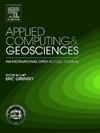Skillful prediction of Indian Ocean Dipole index using machine learning models
IF 3.2
Q2 COMPUTER SCIENCE, INTERDISCIPLINARY APPLICATIONS
引用次数: 0
Abstract
In this study, we evaluated six machine learning models for their skill in predicting the Indian Ocean Dipole (IOD). The results based on the IOD index predictions at 1–8 month lead time indicate that the AdaBoost model with Multi-Layer Perceptron as the base estimator, AdaBoost(MLP), to perform better than the other five models in predicting the IOD index at all lead times. Interestingly, the IOD predictions of AdaBoost(MLP) had an anomaly correlation coefficient above 0.6 at almost all lead times. The results suggest that the AdaBoost(MLP) machine learning model to be a promising tool for predicting the IOD index with a long lead time of 8 months. Analysis revealed that the machine learning model predictions are aided by the signals from the Pacific region, owing to co-occurrences of some of the IODs with El Nino-Southern Oscillations.
利用机器学习模型熟练预测印度洋偶极子指数
在这项研究中,我们评估了六种机器学习模型在预测印度洋偶极子(IOD)方面的技能。基于提前期1-8个月的IOD指数预测结果表明,以多层感知器为基本估计器的AdaBoost模型(MLP)在预测所有提前期的IOD指数方面都优于其他5种模型。有趣的是,AdaBoost(MLP)的IOD预测在几乎所有提前期的异常相关系数都在0.6以上。结果表明,AdaBoost(MLP)机器学习模型是预测IOD指数的一个很有前途的工具,提前期为8个月。分析表明,由于一些iod与厄尔尼诺-南方涛动共同出现,机器学习模型的预测得到了来自太平洋地区的信号的辅助。
本文章由计算机程序翻译,如有差异,请以英文原文为准。
求助全文
约1分钟内获得全文
求助全文
来源期刊

Applied Computing and Geosciences
Computer Science-General Computer Science
CiteScore
5.50
自引率
0.00%
发文量
23
审稿时长
5 weeks
 求助内容:
求助内容: 应助结果提醒方式:
应助结果提醒方式:


